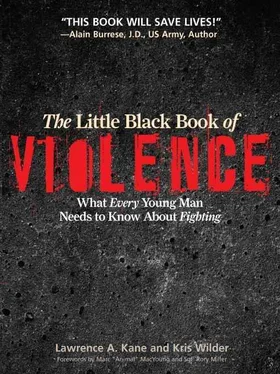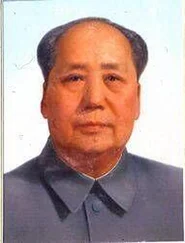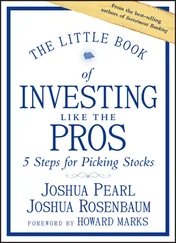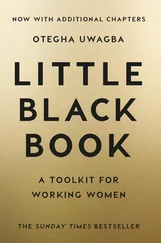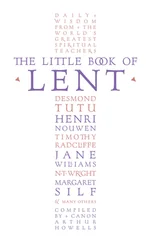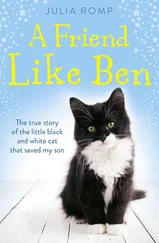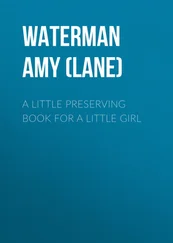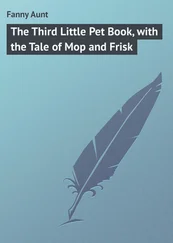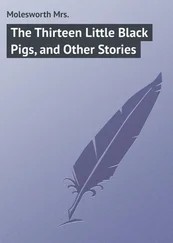Once you have read this book you will recognize behaviors from people around you and, more importantly, you will recognize your own. If you can recognize such behaviors, especially those within yourself, then you are halfway toward winning any conflict. As you begin to understand these behaviors and situations, it will help you make the right choices for success in terms of conflict resolution. Ultimately, what you have learned will help you live a longer and more peaceful life as a result. Be smart, be informed, and be safe.
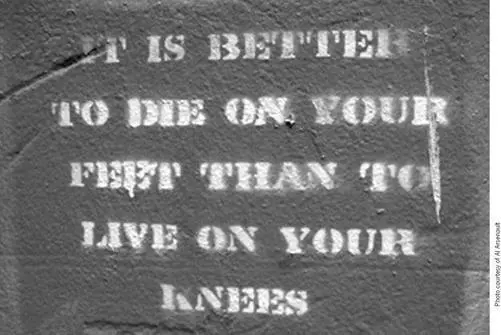
Laura Vanderpool has helped with all of our books over the years. Once again, she reviewed the draft manuscript, gave us insightful feedback, and helped shore up our sometimes overt grammatical shortcomings. Her keen insight and ongoing assistance is, quite simply, invaluable. Without her, we would be grunting cavemen not knowing if we should eat the paper or write on it.
We are also enormously grateful to Loren Christensen who has always been very supportive of our work. For this book, he graciously shared his first-hand experience and in-depth research on gang culture and crowd violence. Great stuff man, thanks! We sincerely appreciate Marc MacYoung’s insight into the brutal realities of violence; he has probably forgotten more than most people will ever know about the subject. Not only was his hard-won wisdom invaluable on this project, but he also donated some great photographs as well. Sergeant Rory Miller helped us benefit from the vast experience at the sharp end of conflict. His discerning feedback has been tremendously helpful and very much appreciated. Lt. Colonel John R. Finch (ret.) graciously shared his unique insight and personal experience with the “cost” and aftermath of violence. Tracy Getty and Jeffrey-Peter Hauck contributed some outstanding photographs. Finally, a big thank you goes to David Organ for sharing his amusing drunk wrangling experience. Thanks guys, you rock!
Posed photos in this book feature Frank Getty, Tracy Getty, Lawrence Kane, Joey Kane, Sophal Keo, Lance Kilgore, Lou Kings, Andy Orose, Joyce Walters, and Kris Wilder. These pictures were taken by Joey Kane, Lawrence Kane, and Kris Wilder. This book also contains several gruesome visuals that graphically illustrate the effects of real-life violence. While some of these pictures were taken by Lawrence Kane, who carried a camera around with him for several months while keeping an eye out for trouble, many were provided by Al Arsenault.
Al is the Executive Director of the famed Odd Squad, a cadre of Vancouver police officers who worked, fought, and filmed in the seedy underbelly of Canada’s infamous Skid Road. This blighted area is infested with drugs, crime, mental illness, and every possible social problem imaginable. These pictures capture but a bit of the human degradation and suffering Al has witnessed in his 27 years as a street cop with the Vancouver Police Department.
A more poignant rendition of the essence of drug Hell can be found in Tears for April: Beyond the Blue Lens (2007), a gut-wrenching feature-length documentary film about the lives, deaths, and the horrible suffering in between, of a handful of addicts who live in what Al calls the “Chemical Gulag” (www.oddsquad.com).
Al is currently in Thailand on a sabbatical from the Vancouver Police Judo Club and Odd Squad to write a book about his experiences with Odd Squad, drug abuse, and policing. He is also starting on two more practical martial arts books for civilians and police. For a sample of his work, see his book Chin Na in Ground Fighting published in 2003.
Spitting blood clears up reality and dream alike.
-Sunao (1887-1926)
[3] Sunao (1887-1926) was a haiku poet who died at the age of thirty-nine. Haiku is a traditional epigrammatic Japanese poem based on 17 syllables that are arranged 5 — 7 — 5. Translation from the original Japanese reads:
Violence is everywhere—on the street, in the workplace, on campus, and in the community. It can be instigated by everyone from drunken fools who hit like Jell-O to drug-crazed lunatics who cannot only throw a good punch but will slash your throat for good measure, and everything else in between. The danger can come from fists, feet, or flying objects. You might encounter or deploy impromptu weapons such as bricks, bottles, or bludgeons, or more conventional ones such as blades, buckshot, or bullets.
You might be the instigator, the victim, a witness, any or all of the above. You might see violence coming or it might catch you totally by surprise. Aggression can come from friends, relatives, acquaintances, or total strangers. It can be logical or illogical, easily predictable or totally unexpected. It might be some crackhead trying to score a few bucks for his next rock, an irate driver in the grip of road rage, or a neighborhood bully intimidating you to make his point. Or it might be from your drunken brother at your cousin’s wedding, or it might be your best friend having a drug reaction at a party.
Aggression doesn’t have to make sense at the time, and often won’t. Whenever the face of violence is glaring at you with that cold, hard stare, however, you must deal with it effectively in order to survive. For example, a friend of ours was putting some dishes away one afternoon when his sister tried to kill him with a steak knife. One moment he was leaning over the dishwasher and the next there was a wedge of razor-sharp steel whistling toward his lower back. Why? She simply wanted to know what it would be like to murder someone, though he did not know that, nor frankly care about that, at the time. All he was concerned with was not dying. Fortunately, he caught a reflection in his peripheral vision, reacted appropriately, disarmed her, and survived unscathed without even a minor scratch.
That’s where situational awareness comes into play. If you see violence coming early enough, you can easily walk, or more often, run away. With sufficient warning to prepare yourself mentally and physically, you can choose to fight or not to fight. When you are caught by surprise, however, you frequently have no choice but to fight… and on his terms rather than yours. Not exactly an ideal situation when it comes to survival. This is, of course, why predators like to jump their victims, catching them by surprise rather than facing up to them on even terms. The other guy doesn’t want to fight. He wants to win .
Though street predators, bullies, and thugs are not typically all that intelligent, they are generally very crafty. It doesn’t take a genius to know that if he attacks you out in a highly traveled, public place, he will have less control over the encounter and will more than likely be seen. And if not get caught, then at least he should have his plans interfered with. While he might want to take you to an isolated place in order to have the privacy he needs to assault, rape, murder, or rob you, he is not likely to find too many victims wandering around in remote, secluded locations. Consequently, fringe areas adjacent to heavily traveled public places are where the majority of violent crimes occur. That is where you need to pay the most attention to your surroundings. This includes areas such as parking lots, public parks, bike paths, alleyways, bathrooms, stairwells, ATM kiosks, bus terminals, train platforms and the like, particularly at night when few bystanders are hanging around.
Aggression doesn’t have to make sense at the time, and often won’t, yet you must lean to deal with it effectively in order to survive.
Читать дальше
